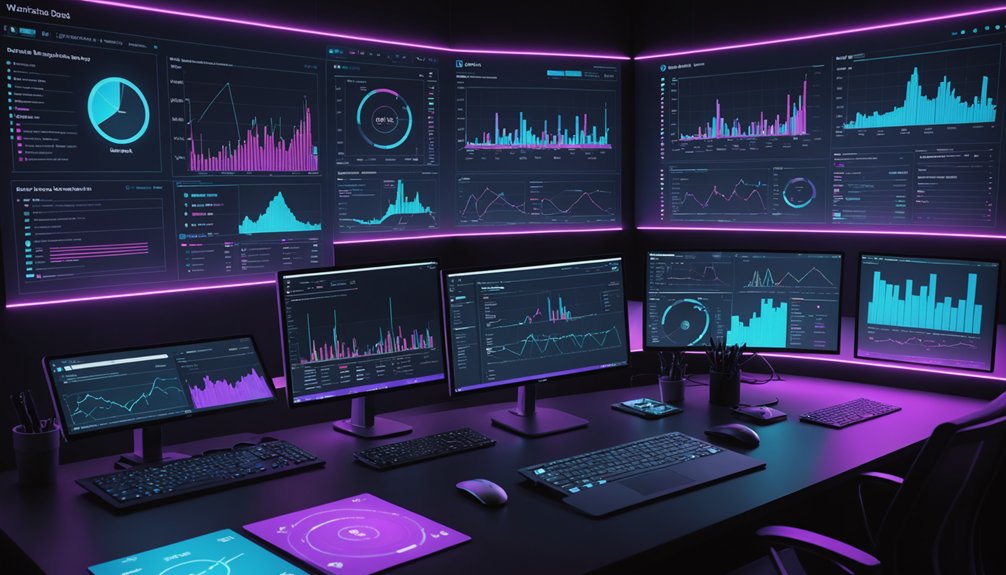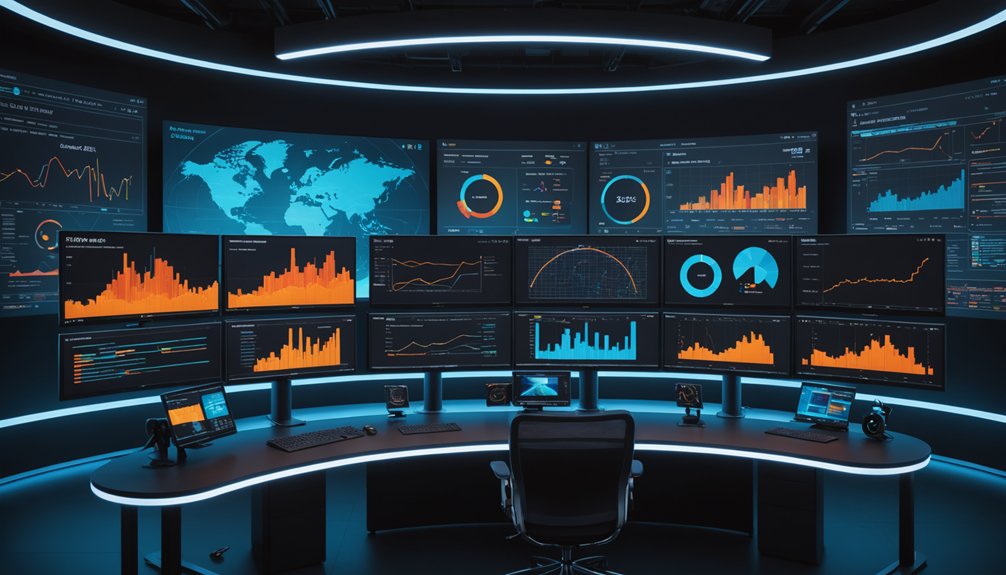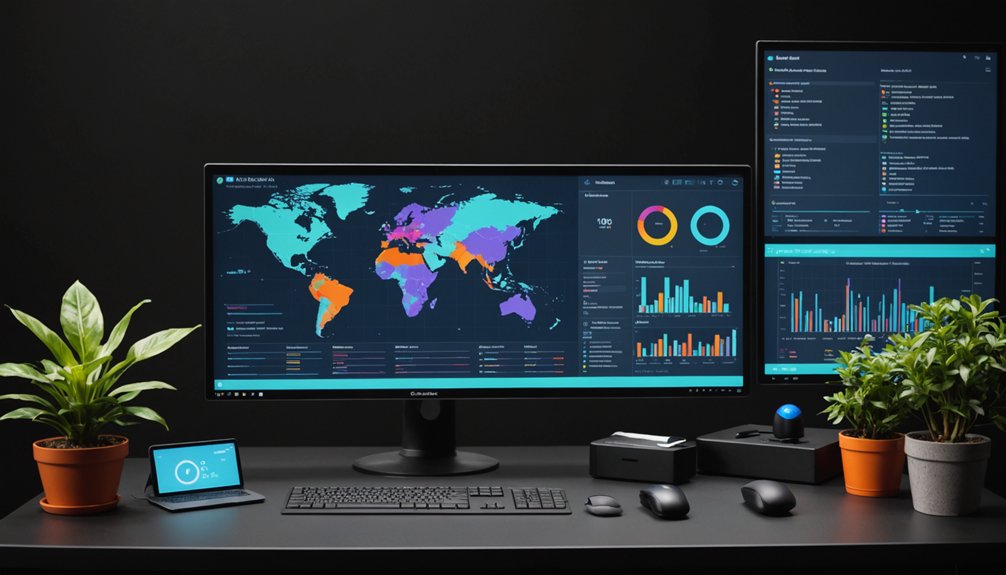Data visualization tools are transforming how businesses digest mountains of data. By 2025, the market hits $12.48 billion as companies scramble to make sense of 463 exabytes generated daily. Frontrunners include Domo with 150+ chart types, Tableau’s powerful connectivity, Looker Studio’s Google integration, and MongoDB Atlas for hefty datasets. Interactive dashboards make complex information actually understandable—imagine that! Companies without these tools? They’re basically reading books without words. The future belongs to those who can see their data, not just collect it.

As the digital world drowns in data, visualization tools are becoming the life preservers businesses can’t afford to ignore. With 463 exabytes of data generated daily by 2025, companies need effective ways to make sense of this tsunami. That’s a lot of zeroes, folks.
The market for these tools is booming—projected to hit $12.48 billion by 2028. No surprise there. Data without visualization is like a book without words. Useless.
Data without visualization is like sending smoke signals in a thunderstorm—your message gets lost in the noise.
Leading the pack is Domo, offering over 150 chart types and drag-and-drop functionality that even your technologically challenged CEO can handle. It’s a powerhouse for business intelligence, making complex data digestible.
Tableau follows closely, connecting to various data sources seamlessly. Because what good is data if it’s trapped in digital silos? The platform has gained popularity despite its steep learning curve for newcomers. Power BI integration with Microsoft products makes it a compelling choice for enterprise users.
Looker Studio is gaining traction for its integration with Google tools and interactive dashboards. Best part? It’s free. Yes, free.
MongoDB Atlas stands out for handling massive datasets and geospatial analysis. Perfect for when you need to know where your customers are hiding. Like Vista Social’s analytics, these tools provide comprehensive insights for businesses of all sizes.
These tools aren’t just pretty interfaces. They’re revolutionizing decision-making processes. Interactive dashboards enable real-time exploration. Patterns emerge. Outliers stick out like sore thumbs. Businesses make better decisions, faster.
SAP Crystal Reports and AgencyAnalytics are creating waves with their thorough analysis capabilities. Not the sexiest names, but they get the job done.
For beginners, Canva offers a user-friendly approach to creating polished visuals without the learning curve.
The real value? Communication. These tools translate complex data into something stakeholders actually understand. No more glazed eyes during presentations. No more “I’ll circle back on that.” Just clarity.
By 2025, research indicates that over 70% of businesses will be adopting these visualization tools to gain competitive advantages in their respective markets.
In this data-saturated landscape, visualization tools aren’t luxury items. They’re necessities. Companies that fail to adopt them will drown in their own information. The rest will ride the wave to insight-driven success. Simple as that.
Frequently Asked Questions
How Steep Is the Learning Curve for These Visualization Tools?
Learning curves vary greatly across these tools.
Power BI offers the gentlest introduction—Microsoft’s baby is deliberately user-friendly.
Tableau? Steeper, but worth it for those gorgeous visualizations. It’s the visualization equivalent of CrossFit—painful but effective.
Domo strikes a middle ground with its intuitive interface.
QlikView? That’s the tough one. Its associative model is powerful but confusing for newbies.
Bottom line: they all require investment, but Power BI gets you moving fastest.
Can These Tools Integrate With Legacy Database Systems?
Yes, most data visualization tools can integrate with legacy database systems. They’re designed to be flexible.
Integration happens through data connectors, APIs, and transformation layers that bridge old and new. It’s not always pretty though. Some legacy systems require manual workarounds.
Data format consistency remains a challenge—garbage in, garbage out, as they say. Cloud-based tools typically offer better integration capabilities.
The tech keeps improving, making these connections smoother than they were five years ago.
What Are the Pricing Structures for Enterprise-Level Implementations?
Enterprise-level pricing for visualization tools is all over the map.
Microsoft Power BI starts at $9.99/month/user for Pro, jumping to $20/month for Premium.
Tableau charges $15/month just to view dashboards.
Qlik Sense? Good luck getting a straight answer without talking to sales.
Google Data Studio is technically free, but you’ll pay for cloud services.
Zoho starts around $24/month for two users.
Costs balloon with more users, fancy features, and security requirements.
Integration ain’t cheap either.
How Do These Tools Handle Real-Time Streaming Data Visualization?
Real-time streaming data? These tools eat it for breakfast. Tableau and Power BI leverage AI integration to handle dynamic data feeds without breaking a sweat.
Domo centralizes those streams beautifully. QlikView’s interactive dashboards? Real-time insights on demand. Infogram uses API integration for instant updates.
Automated workflows streamline the whole process. The payoff? Rapid decision-making and immediate trend detection.
Organizations spot patterns as they emerge, not after the fact. Pretty vital in today’s data-saturated landscape.
Are There Industry-Specific Versions of These Visualization Platforms?
Yes, industry-specific versions exist all over the place.
Healthcare providers use specialized tools like AHRQ and Clarify Health that handle sensitive patient data.
Financial sector? They’ve got custom Tableau and Power BI implementations for tracking monetary metrics.
These aren’t just regular tools with a new coat of paint. They’re built to integrate with industry systems and follow sector-specific security protocols.
Some even incorporate AI for specialized insights.
Different industries, different visualization needs. Simple as that.




